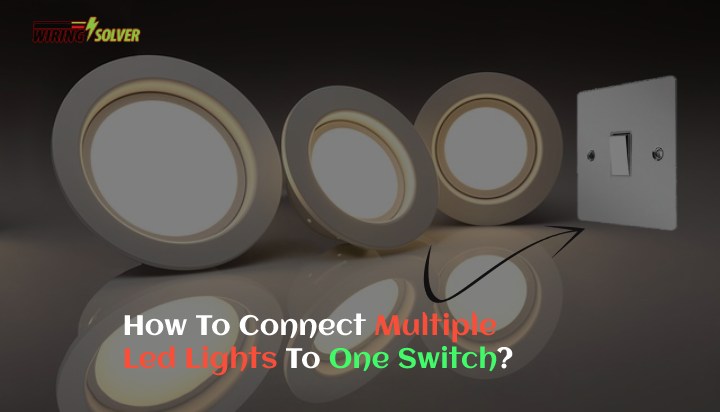With so many various types of generators available today with different power options, one thing is common about each of them. And it’s the fact that these are literally lifesavers. I can’t imagine sitting in the dark without any electricity. I’m sure, just like me to many others, it’s a real-life nightmare, having no contact with technology.
Once my area went through a horrible power cutout. Obviously, it bought me several frustrations. I was not able to use my washing machine. Kids were having a hard time doing their homework. Basically, everything was just a mess.
That was the moment we decided to get a generator, a pretty long time ago. And now, with my quite long experience, I’ve thought about answering some often-asked questions. How to connect a generator to house without transfer switch, if it’s okay to do so, and everything that relates. Stick Till the End!
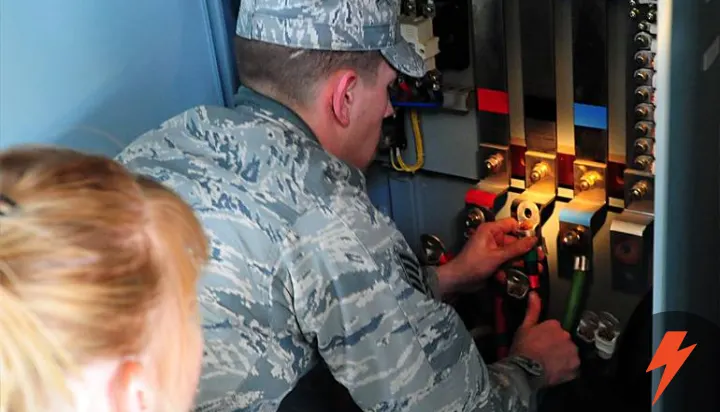
But Can You Run a Generator Without a Transfer Switch?
Technically yes, you can connect generator to house without transfer switch. But that’s something almost nobody recommends, me too! It’s a quite dangerous decision actually because a transfer switch basically does the job to keep everything safe.
From your main electrical panel to the people who work outside of your home for wiring, the transfer switch protects and prevents any mishap. So don’t do this if not absolutely necessary!
How to Connect Generator to House Without Transfer Switch?
So just what I mentioned, that it is not recommended to go without a transfer switch, but the wiring is still possible. And usually, when someone asks, how to wire generator to house without transfer switch, I think about:
- Wiring directly into the main electrical panel. However, this could be dangerous if anything goes wrong.
- Going for a direct connection to the main electrical panel but including a subpanel.
- Using an interlocking kit. (recommended)
Connect Generator without Transfer Switch but Interlock.
Basically, the interlock and transfer switch do the same job but in a different way. A transfer switch is automatic and often costs a lot. Still, they are prevalent and common in most households.
While an interlock needs human operation. It’s also relatively less costly than the transfer switch. Possibly, the price point is the main reason why many homeowners want to try this.
Most interlock setup is capable of pouring power to panel’s circuit, no matter what type. However, sometimes overloading can become a huge problem leading the breaker to trip. By turning the breaker on and off, this can be controlled by a user.
With an interlocking kit, you basically have the electricity from the generator feed to your home. And that would require no power grid back feeding.
Using interlocking kits are also allowed mostly in US. You just need to take help from an electrician who is licensed to complete your installation. From different shapes to sizes, these kits are available for matching specific panel. However, a few home systems might not cooperate with them easily.
An Interlocking Kit Would:
- Keep the control panel disconnected.
- Have the main power supply line off when in charge.
- Allows direct mount into the control panel.
- Breakers get mechanically locked in the set position.
Other Tools You Need for Hooking Up Generator.
Here you are going to need two types of tools basically. One category involves protective gears that ensure you are playing it safe while hooking up generator to home. This sector involves a good pair of gloves. Rubber gloves will do the job.
Next, you need some sort of eyewear, a safety goggle is alright. Don’t forget boots so that no electrocution happens to you ever.
Now the next sector is about tools that will help you to connect generators with your home. These are directly involved and include some gears that you may want to buy beforehand.
I suggest you buy them from a reliable source so that there is no risk with the process. Remember dealing with electricity is already enough risky. You don’t want to add the burden by messing up with poor-quality stuff.
A list of things you’ll need is given below.
- Pliers
- Wrenches
- Screw Drivers
- An Interlock Kit (Suitable to Your Home Breaker)
- Additional Red, Black & Green Wires
- Electric Tape
- Drilling Machine
- 30-Amp Dual Breaker (This too needs to fit your home breaker box)
Connect Generator to House Using Interlock Kit.
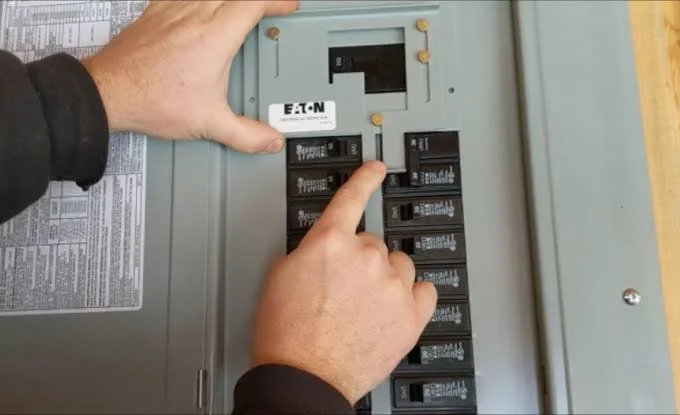
Use Philips screwdriver for getting the panel screws loose and then remove those. You can get the cover out and then take the unit to the bench. Now that you have it on the bench, get some tools for this part. The matching drill bit, drilling machine, impact driver, and flat bit (5/16 nut driver bit).
Depending on your panel, it may require working with middle mounting holes, While a few need outside mounting holes. You should also have a woodblock for placing beneath the drilled spot. So, it does not hit the panel door front. Then have all the four mounting dimples drilled.
Next use a file for all drilling burrs. Open the door while having the panel on edge. Hold the interlock kit bracket inside the panel. Make sure it aligns properly with the mounting holes. Use the impact driver and get the shorter screws installed.
As the bracket is now secure, you can then take the panel cover to the panel and reinstall it. Open the door and put the instructions stickers/decals on spot.
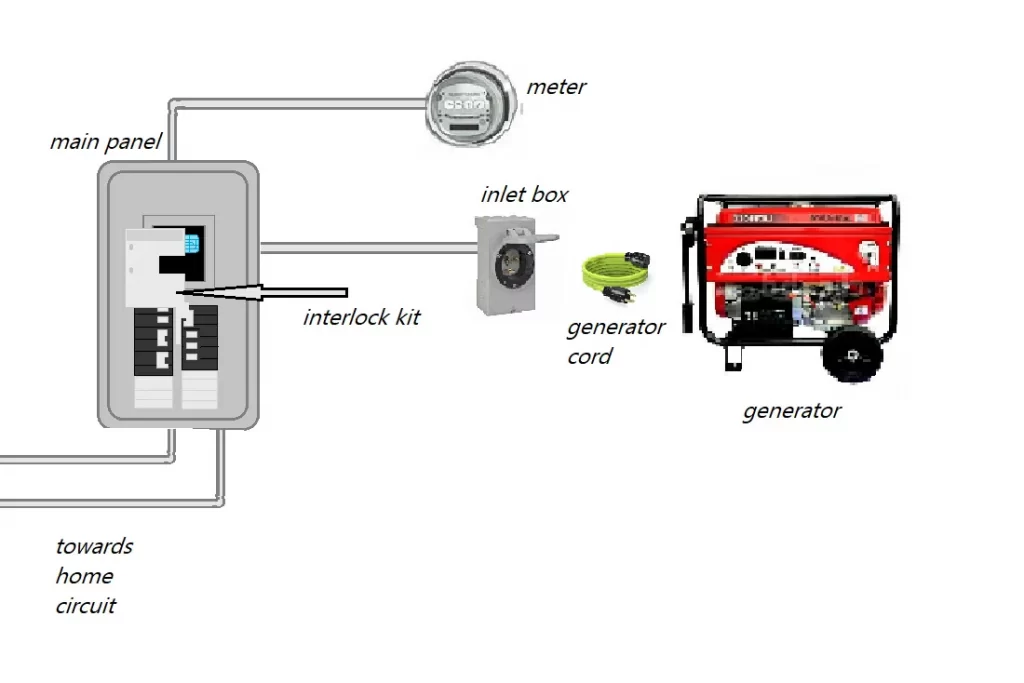
The Remaining Wiring Process.
I’ll put down the process on how to wire a generator to a breaker box in the short steps below. And yes, it’s going to be without transfer switch. Here’s the remaining process:
- Your generator needs to have a huge round plug. Only then it’s possible to power both sides of the breaker box. There might be some codes written on it. Google them and find out if they allow dual powering.
- You need a space or hole to make wires travel from the generator to all the way into your house. It needs to be huge enough to fit in all wires accurately. Find the right spot to place your generator and then make a hole.
- Now find another space that is a few feet away from the hole you just made. Simply mount the power inlet box here. It needs to be watertight and attached with proper glue.
- Simply pull wires one by one from the conduit body and wire generator inlet plug. You’ll need to remove 0.75 inches of insulation for each wire. Use a screwdriver and tighten it up. X & Y needs black, common needs white and ground needs green wire.
- Let the breaker box be ready to receive the wires you pull inside. Shut off everything from the breaker box to the branch. Let the wire stay in the upper-right space. Make everything sorted out with proper breaker retainer installation. Now cover it and you are done.
So, you now know how to run a generator without a transfer switch. However, as I mentioned earlier, there are other ways as well. And I’ll just tell you how those works to clarify why you should not be trying them.
To Install Generator Without Transfer Switch, Don’t Directly Wire to Main Panel.
Before you try to find information on how to connect generator to main switch directly, please be further aware of what can take place with this decision. Your main electrical panel would be in danger and not to mention a lot of people who work for wiring tasks will fall at risk.
Unless you would consider going with a sub-panel. But this route, even if it’s possible, your best bet would be keeping it out of the list. You can talk to an expert electrician and they’ll let you know the complete consequence.
Backfeeding To Connect Generator Without Transfer Switch
Another way to install generator but no transfer switch being involved would be through backfeeding. The main concept here is allowing the current to enter your residence. Then the throttle power becomes 240 volts. After that, it travels through specific routes in the breaker panel. And finally, the appliances, lightings, and outlets enjoy the distribution.
This means:
- Your house gets to work with the power’s reverse flow.
- Redistribution of electricity takes place.
But, how to wire a generator to a breaker box to achieve this back-feeding? Well, most folks would use a DIY cord as well as 2-male plugs. Following the connection with the generator, the current would enter the main breaker through the outlet’s branch circuit breaker.
However, Back Feeding Is Threatening as well as Illegal.
Utility lines getting electrified is obviously not legal and very dangerous. Some say having the main breaker off can reduce the risk. But there’s no guarantee that this little trick would really escape any hazard. Which are what you need to know about next.
Anybody accidentally tripping over the backfeed cord (also known as suicide cord) coming out of any outlet, might face electric shock.
The power of your entire house has a chance of facing miss balance. Only a huge size generator would be able to deliver such an amount of power, and so, even with breakers off, there’s a good chance of failed load balance.
The lack of balance can create a high amount of pressure on the generator.
However, If You Must Follow This Route:
- Go for hooking up the generator with an electrical service panel.
- Complete the wiring with manual or automatic backfeed breaker along with interlock.
How About Trying to Connect Generator to House Through Dryer Outlet?
Another no transfer switch generator installation tactic that people often think about (almost similar to backfeed actually) is using the dryer outlet. First of all, if not done the right way, this could be dangerous as well as illegal. You are basically taking a risk of causing harm to someone else’s life.
Trying to backfeed the power through wiring s it flows backward going to the outside located transformer. The flow can travel up to several kilovolts. And this means any lineman working to rescue power will fall at severe risk by getting in contact with the high voltage line. In the worst case, they can get killed!
Also, not to mention, the dryer outlet won’t be enough to run your entire house. It usually has 30 amps of maximum ratings. So maybe your fridge and a few lights can work. But anything heavy, such as electric stoves or even heaters, are quite sure not going to work.
I just recently read somewhere that one person tried back feeding, in the so-called right way by isolating the mains. But, as soon as the grid power got back and they went for the main breaker to turn it on without shutting the generator, the worst happened. The generator became a burning fireball. Because it was located quite far from the house, nothing major happened. But imagine if it was! Also, generators are expensive you know.
So yes, the dryer outlet would also be a bad choice for connecting the generator without a transfer switch.
A Few More Don’ts for Safety Concern
- Never try to use any type of male-to-male plugging. This will damage the whole system.
- Avoid using a generator directly connected with your circuit breaker. It’s going to burn down your entire house.
- Don’t try to do any sort of adjustments without turning the main switch off.
- Contact the govt. offices related to electricity and find out if it’s legal for your states.
Frequently Asked Questions
1. Do you really need a generator transfer switch?
If you do want to connect generator in a safe way, then yes. And I believe most of us would prefer that route. The method of wiring in a generator to your house is complicated enough, trying different confusing ways is not necessary unless you have an unignorable situation.
2. Can you install a generator transfer switch yourself?
There are several DIY kits available these days. So, I don’t see a reason why you can’t. But then again, if this is something you’ve never tried before, let the licensed expert deal with it.
3. Which is better transfer switch or interlock?
Of course, the transfer switch is better as that is the best route for a long-term generator setup. However, if you really want to avoid the expense of generator connection without transfer switch, then an interlock can help.
4. Can you plug a generator into a wall socket?
No, you cannot! Only extension cords must be used for generators. In case you try such a thing, you’ll be inviting overloading risks that often result in catching fire or at least overheating.
Wrapping Up
So now you know how to connect a generator without transfer switch. Using an interlock kit, its’ absolutely possible to connect a generator to your home. Never go for methods that are illegal and not appropriate according to your state rules. They might sue you for this.
The best way is to contact an electrician and he’ll do this job for a small amount of money.
If you’re not lacking the technical know-how and proper wiring methods, it’s still recommended that you get some sort of permission first. Good Luck!
| The tutorial is for knowing and learning purpose about generator connection. If your area does not allow such manipulation then it’s completely your responsibility to avoid using it. Any illegal attempts done by you is only your crime and we will not take any sort of responsibility. |

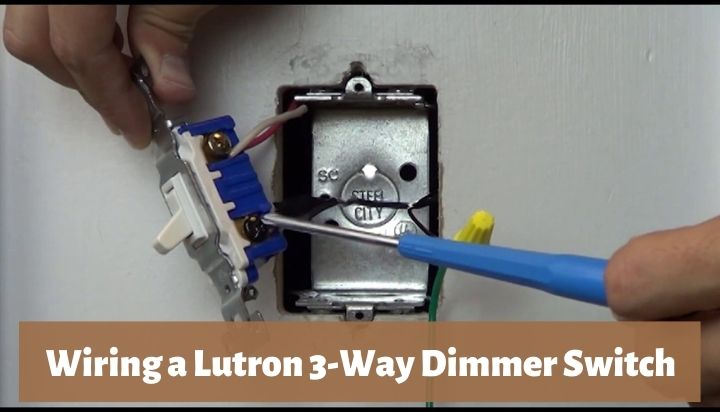
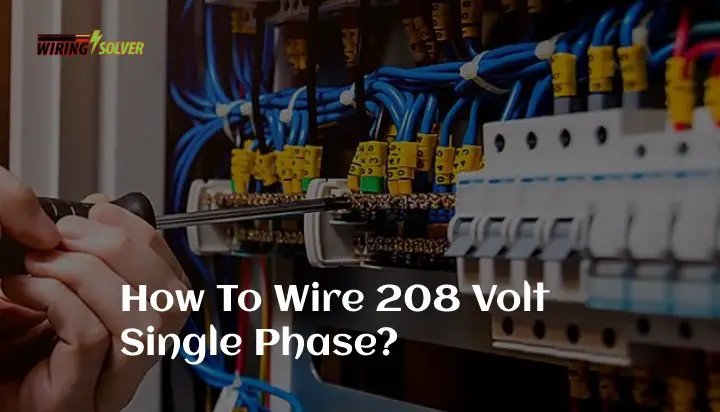
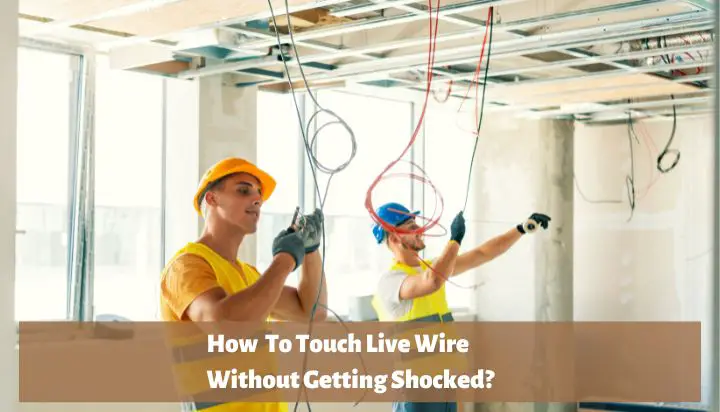
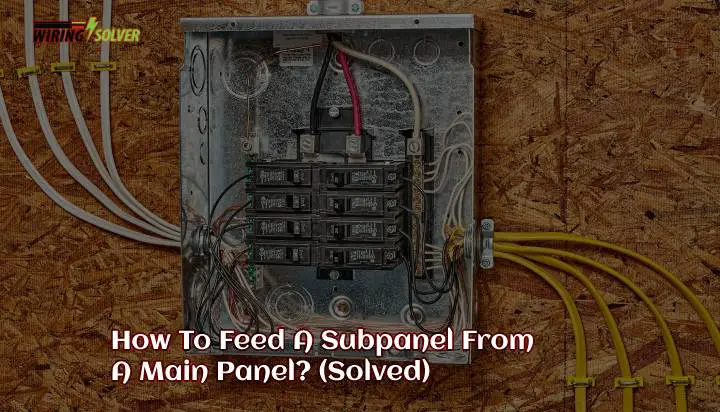
![Wiring a Combination Switch with 2 Wires! [Full Guide]](https://wiringsolver.com/wp-content/uploads/2022/10/Wiring-a-Combination-Switch-with-2-Wires.jpg)
